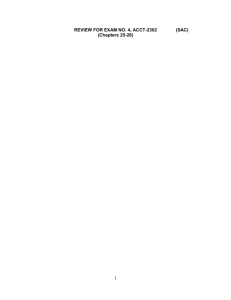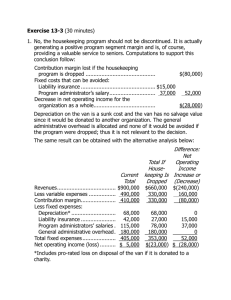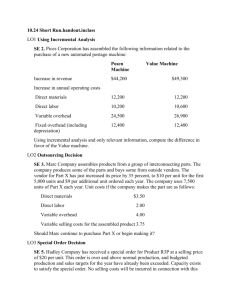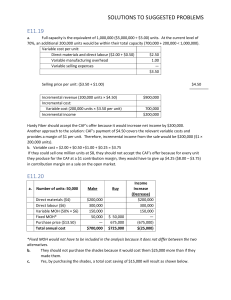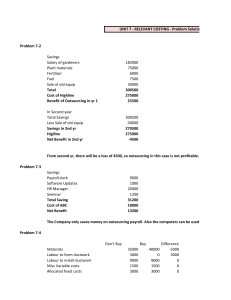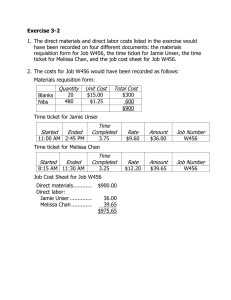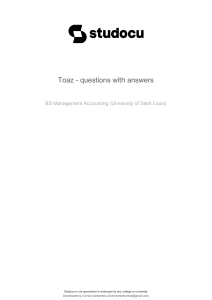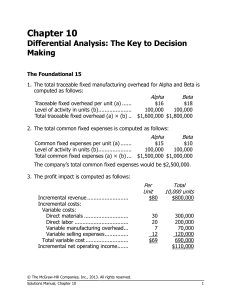Problem 13-12
advertisement
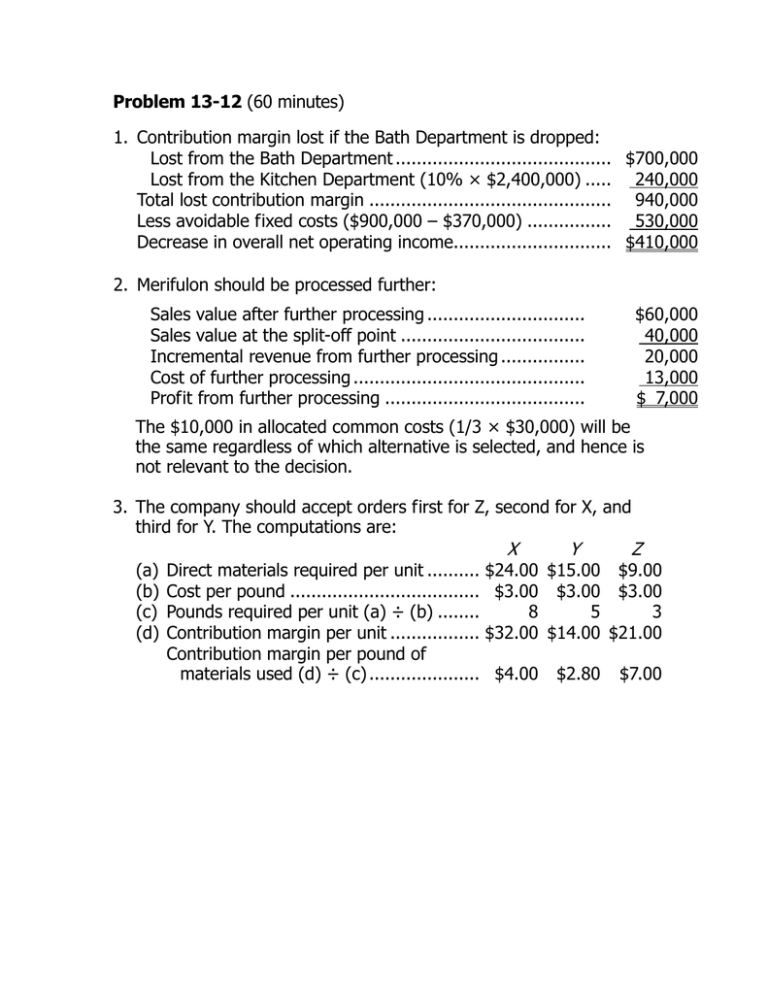
Problem 13-12 (60 minutes) 1. Contribution margin lost if the Bath Department is dropped: Lost from the Bath Department .......................................... $700,000 Lost from the Kitchen Department (10% × $2,400,000) ...... 240,000 Total lost contribution margin ............................................... 940,000 Less avoidable fixed costs ($900,000 – $370,000) ................. 530,000 Decrease in overall net operating income............................... $410,000 2. Merifulon should be processed further: Sales value after further processing .............................. Sales value at the split-off point ................................... Incremental revenue from further processing ................ Cost of further processing ............................................ Profit from further processing ...................................... $60,000 40,000 20,000 13,000 $ 7,000 The $10,000 in allocated common costs (1/3 × $30,000) will be the same regardless of which alternative is selected, and hence is not relevant to the decision. 3. The company should accept orders first for Z, second for X, and third for Y. The computations are: (a) (b) (c) (d) X Y Z Direct materials required per unit .................................... $24.00 $15.00 $9.00 Cost per pound .............................................................. $3.00 $3.00 $3.00 Pounds required per unit (a) ÷ (b) .................................. 8 5 3 Contribution margin per unit ........................................... $32.00 $14.00 $21.00 Contribution margin per pound of materials used (d) ÷ (c) ............................................... $4.00 $2.80 $7.00 Problem 13-12 (continued) Since Z uses the least amount of material per unit of the three products, and since it is the most profitable of the three in terms of its use of this constrained resource, some students will immediately assume that this is an infallible relationship. That is, they will assume that the way to spot the most profitable product is to find the one using the least amount of the constrained resource. The way to dispel this notion is to point out that product product Y, but yet it is preferred over product Y. The key factor is not how much of a constrained resource a product uses, but rather how much contribution margin the product generates per unit of the constrained resource. 4. Item Relevant Costs Make Buy Direct materials (60,000 @ $4.00) .................................. $240,000 Direct labor (60,000 @ $2.75) ........................................ 165,000 Variable manufacturing overhead (60,000 @ $0.50) ........................................................ 30,000 Fixed manufacturing overhead, traceable (1/3 of $180,000) ........................................................ 60,000 Cost of purchasing from outside supplier (60,000 @ $10) ...........................................................$600,000 Total cost....................................................................... $495,000 $600,000 The two-thirds of the traceable fixed manufacturing overhead costs that cannot be eliminated, and all of the common fixed manufacturing overhead costs, are irrelevant. The company would save $105,000 per year by continuing to make the parts itself. Problem 13-12 (continued) 5. Monthly profits would be increased by $9,000: Total for Per Unit 2,000 Units Incremental revenue ...................................................... $12.00 Incremental costs: Variable costs: Direct materials ......................................................... 2.50 Direct labor ............................................................... 3.00 Variable manufacturing overhead ............................... 0.50 Variable selling and administrative .............................. 1.50 Total variable cost ........................................................ $ 7.50 Fixed costs: None affected by the special order ............................. Total incremental cost ..................................................... Incremental net operating income ................................... $24,000 5,000 6,000 1,000 3,000 15,000 0 15,000 $ 9,000 6. The relevant cost is $1.50 (the variable selling and administrative costs). All other variable costs are sunk, since the units have already been produced. The fixed costs would not be relevant, since they would not be affected by the sale of leftover units.
